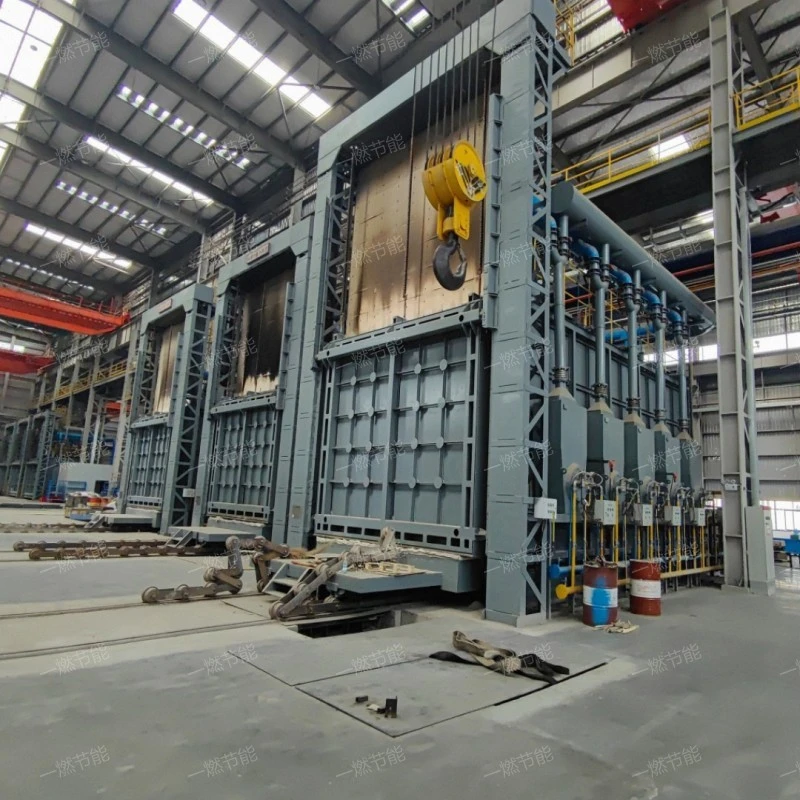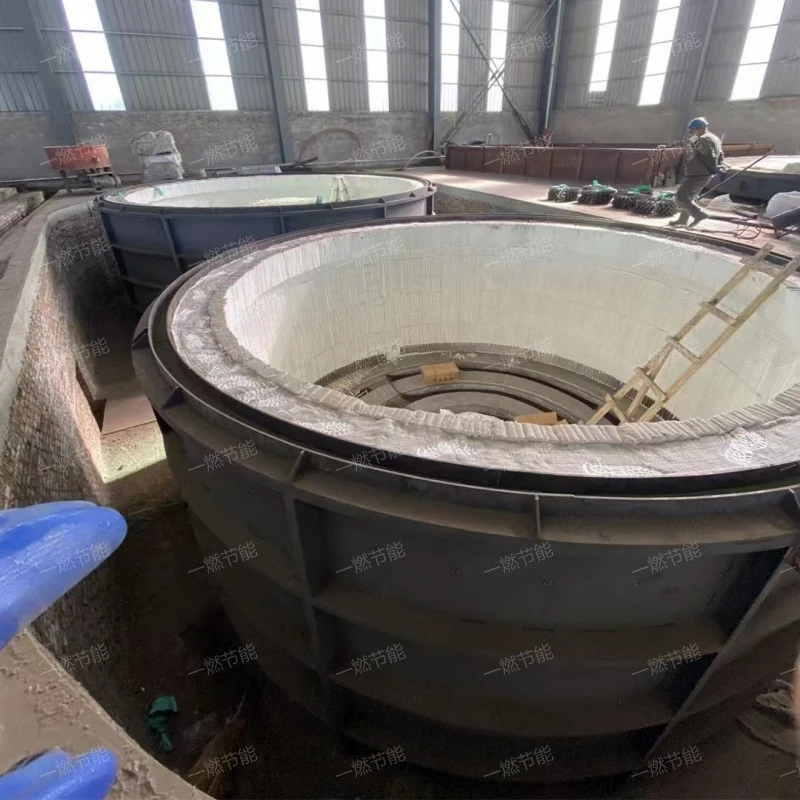What is a SCR low-temperature catalytic absorption flue gas denitrification system? Introduction to the Working Principle of SCR denitration
SCR low-temperature catalytic absorption flue gas denitrification systemthe full name is selective catalytic reduction technology, which is an advanced flue gas denitrification technology.,is a common SCR low-temperature catalytic absorption flue gas denitrification system,at runtime,Ammonia gas or other suitable reducing agent (such as urea aqueous solution) is sprayed into the flue gas upstream of the catalyst at high temperature. Under the action of catalyst, the reducing agent selectively reacts with nitrogen oxides (NOx) in flue gas to generate pollution-free nitrogen and water vapor. Because NH3 is selective, it only reacts with NOx and basically does not react with O2, so this technology is called selective catalytic reduction denitrification.,the product looks beautiful.,has been favored by more and more customers.。The following is to introduce the SCR low-temperature catalytic absorption flue gas denitrification system:
1、Brief introduction of SCR low-temperature catalytic absorption flue gas denitrification system
SCR low-temperature catalytic absorption flue gas denitrification systemdelective catalytic reduction technology is an efficient flue gas denitrification technology.。

SCR low-temperature catalytic absorption flue gas denitrification system
2、SCR low-temperature catalytic absorption flue gas denitrification system principle
SCR low-temperature catalytic absorption flue gas denitrification systemat the start of the operation,Catalysts are used to promote the selective catalytic reduction reaction between reducing agents (such as ammonia and urea) and NOx in flue gas. Under the action of catalyst, the reductant preferentially reacts with NOx to generate harmless nitrogen and water vapor, but hardly reacts with oxygen in flue gas. This chemical reaction is usually carried out in the temperature range of 200-450℃, and the specific reaction temperature depends on the type of catalyst selected.,the product looks atmospheric.,Widely used in environmental protection, Flue gas denitrification, Promote sustainable development, Meet the requirements of environmental protection and Flue gas denitrification,it is widely used incement plant,building materials,coal-fired power station,metallurgy,iron and steel plant and other industries,it refers to the process of removing nitrogen oxides from flue gas to reduce environmental pollution. NOx is a pollutant harmful to the atmospheric environment, which has strong irritation and toxicity, and will lead to environmental problems such as acid rain and photochemical smog, and also endanger human health. The main principle of flue gas denitrification technology is to reduce NOx to nitrogen and water by adding appropriate reducing agent or catalyst in the combustion process or flue gas treatment system, so as to reduce NOx emission.。

SCR low-temperature catalytic absorption flue gas denitrification system
3、SCR low-temperature catalytic absorption flue gas denitrification system advantage
The advantages of SCR low-temperature catalytic absorption flue gas denitrification system are as follows:
- High efficiency denitration capacity
- Intelligent control and convenience of operation
- Mature and stable technology
- economic viability
- Environmental friendliness
Gate is famous for its high efficiency of denitration, which can usually reach more than 90% denitration efficiency. This means that the SCR low-temperature catalytic absorption flue gas denitrification system technology can significantly reduce the concentration of nitrogen oxides (NOx) in flue gas and make it meet strict environmental protection emission standards. This high-efficiency denitration ability mainly benefits from the promotion of catalyst, which makes the chemical reaction between reductant and NOx more rapid and thorough.
The SCR low-temperature catalytic absorption flue gas denitrification system has gradually realized intelligent control. By integrating advanced control system and sensor technology, the SCR low-temperature catalytic absorption flue gas denitrification system can monitor the composition and emission concentration of flue gas in real time, and automatically adjust the injection amount of reductant and the active state of catalyst to ensure the stability and reliability of denitrification efficiency.
SCR low-temperature catalytic absorption flue gas denitrification system technology has been developed and applied for many years, and the technology is mature and stable. The SCR low-temperature catalytic absorption flue gas denitrification system has high reliability and stability, and can maintain stable denitrification efficiency under various working conditions. In addition, the SCR low-temperature catalytic absorption flue gas denitrification system technology has good adaptability and adjustability, and can be adjusted and optimized according to different flue gas components and emission requirements.
The initial investment of this technology may be high, but in the long run, its economic feasibility is remarkable. The high-efficiency denitration ability of SCR low-temperature catalytic absorption flue gas denitrification system technology can significantly reduce the environmental emission cost of enterprises and avoid fines and legal risks due to illegal emissions. In addition, SCR low-temperature catalytic absorption flue gas denitrification system technology can also reduce operating costs and improve the economic benefits of enterprises by recycling heat energy.
The by-products produced by SCR low-temperature catalytic absorption flue gas denitrification system technology are mainly nitrogen and water vapor, which are harmless to the environment and will not cause secondary pollution. Compared with the traditional wet flue gas denitrification technology, the SCR low-temperature catalytic absorption flue gas denitrification system technology does not need to use a lot of water resources and will not produce pollutants such as wastewater, which is more in line with the requirements of environmental protection and sustainable development.

SCR low-temperature catalytic absorption flue gas denitrification system
4、SCR low-temperature catalytic absorption flue gas denitrification system characteristics
The SCR low-temperature catalytic absorption flue gas denitrification system features are as follows:
- high efficiency
- High denitration efficiency
- Environmental protection
- Small secondary pollution
- Mature technology
Gate technology can effectively remove NOx from flue gas, and the denitrification efficiency can usually reach more than 90%.
The denitration efficiency of SCR low-temperature catalytic absorption flue gas denitrification system technology can reach more than 90%, and it is a widely used post-combustion denitration technology at present.
The final products of SCR low-temperature catalytic absorption flue gas denitrification system technology are harmless nitrogen and water vapor, which will not cause secondary pollution to the environment.
The by-products produced in the SCR low-temperature catalytic absorption flue gas denitrification system opening process are nitrogen and water vapor, and there is no secondary pollution problem.
After years of development and application, SCR low-temperature catalytic absorption flue gas denitrification system technology is very mature and has a wide application prospect.

SCR low-temperature catalytic absorption flue gas denitrification system
5、SCR low-temperature catalytic absorption flue gas denitrification system structure composition
The SCR low-temperature catalytic absorption flue gas denitrification system structure is introduced as follows:
- Reducing agent storage and supply system
- Reducing agent supply
- Catalytic reduction reaction
- Flue gas mixing and distribution system
- Temperature control and monitoring system
Used to store and supply reducing agent (such as ammonia or urea solution) to the reactor.
Reducing agents such as liquid pure ammonia or ammonia water (aqueous solution of ammonia) are evaporated and mixed with diluted air or flue gas.
Under the action of catalyst, the reductant and NOx in flue gas undergo selective catalytic reduction reaction to generate nitrogen and water vapor.
Ensure that the flue gas and reducing agent are fully mixed in the reactor to improve the denitrification efficiency.
It is used to monitor and control the temperature of the reactor to ensure that the chemical reaction is carried out in the optimal temperature range.

SCR low-temperature catalytic absorption flue gas denitrification system
6、SCR low-temperature catalytic absorption flue gas denitrification system use
SCR low-temperature catalytic absorption flue gas denitrification systemMainly used forImprove product quality,Promote sustainable development,environmental protection,Meet the requirements of environmental protection andFlue gas denitrification,it is an ideal choice for customers to buy SCR low-temperature catalytic absorption flue gas denitrification system。

SCR low-temperature catalytic absorption flue gas denitrification system
SCR low-temperature catalytic absorption flue gas denitrification systemthat is, selective catalytic reduction technology is a technology used to reduce the emission of nitrogen oxides in flue gas.,is a SCR low-temperature catalytic absorption flue gas denitrification system,widely used in building materials, Gas power plant, cement plant, coal-fired power station, Gas power plant and other fields。
Related recommendation
-

What is a Double chamber quenching industrial furnace? Forging furnace specifications, models, and parameters
2025-5-27 -

What is a Energy saving electric heating furnace for trolley? Trolley electric heating furnace specifications, models, and parameters
2025-5-27 -

Introduction to Steel plant heating furnace denitrification equipment, introduction to SCR denitration advantages and characteristics
2025-5-27 -

Introduction to Two end high-temperature trolley furnace and Forging furnace working principle
2025-5-27 -

Introduction to Denitrification equipment for forging heating furnace and SCR denitration structure principle
2025-5-27 -

Introduction to Fully automatic resistance furnace, introduction to Trolley resistance heating furnace advantages and characteristics
2025-5-27 -

Introduction to Rapid heating electric furnace, how much is the price of the Trolley electric furnace?
2025-5-27 -

Introduction to Multi-stage trolley furnace, introduction to Forging furnace advantages and characteristics
2025-5-27 -

What is a Pit type ring annealing furnace? Introduction to the advantages and characteristics of the forging furnace
2025-5-27 -

Introduction to Industrial natural gas trolley furnace and heating furnace working principle
2025-5-27




